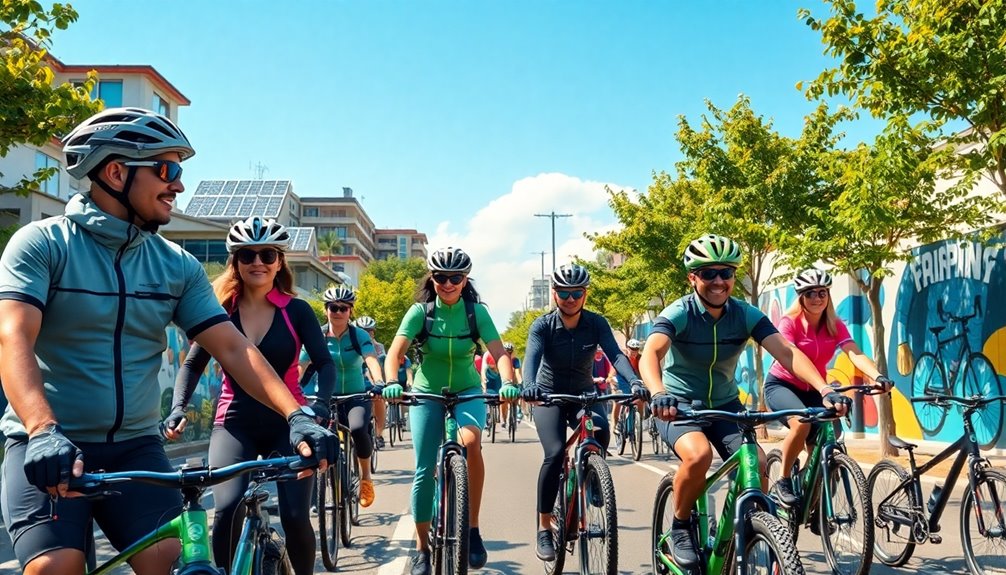The future of cycling communities is bright and focused on sustainability, technology, and inclusivity. You'll see more eco-friendly practices in events and bike manufacturing while innovations enhance safety and performance. Diverse programs are bringing new faces to cycling, especially women, with increased opportunities and visibility. Urban cycling is gaining traction as cities invest in safer infrastructure. As bikepacking culture flourishes, it strengthens community ties. There's much more to explore about these exciting changes.
Key Takeaways
- Increased focus on sustainability will lead cycling communities to adopt eco-friendly practices, including carbon-neutral events and recycled materials in manufacturing.
- Technological advancements, such as smart helmets and AI training tools, will enhance safety and performance for cyclists in communities.
- Growing diversity and inclusion initiatives will create more accessible cycling programs, fostering participation from underrepresented groups and building supportive networks.
- The expansion of women's cycling events and media coverage will elevate female participation and visibility in cycling communities.
- Urban mobility investments will integrate cycling into public transport systems, creating robust multimodal options and enhancing community connectivity.
Sustainability Takes Centre Stage
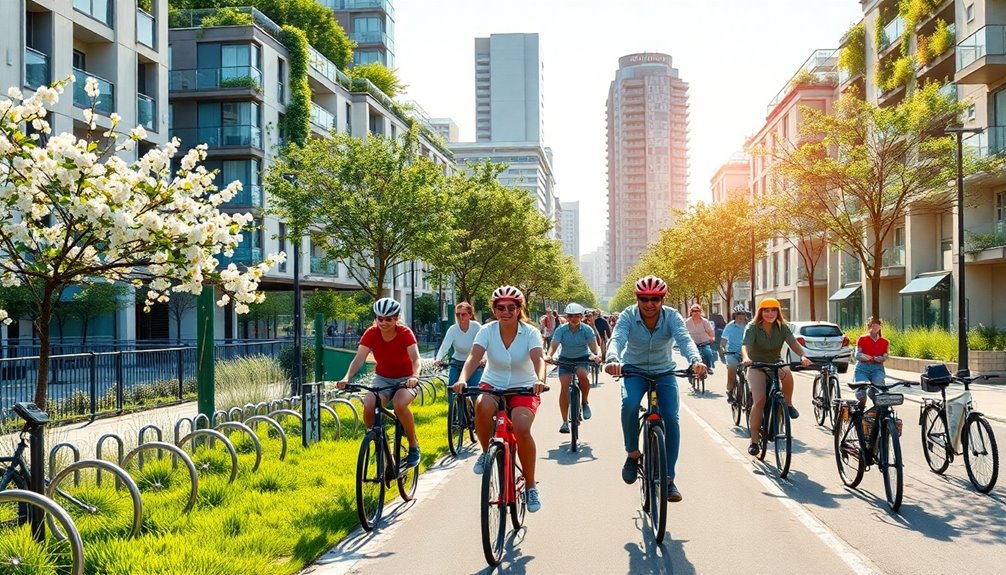
As cycling continues to grow in popularity, sustainability is taking center stage in the industry. By 2025, you'll see initiatives aimed at reducing waste and carbon footprints becoming standard practice.
Events like the Tour de France have already set the bar high with their carbon-neutral practices since 2024, influencing cycling events worldwide. Brands such as Specialized and Trek are stepping up, incorporating recycled and upcycled materials into their products, showcasing their commitment to eco-friendly manufacturing.
The Tour de France leads the way with carbon-neutral practices, inspiring brands like Specialized and Trek to embrace eco-friendly manufacturing.
On the urban front, bike-sharing programs are teaming up with renewable energy providers to lower their carbon footprints, promoting sustainable mobility. Additionally, cities are adopting recycling practices for bicycle parts, fostering a circular economy within the cycling community. This push for sustainability is reshaping the cycling industry for the better, much like how responsible tourism practices are being emphasized in the cruising sector.
You are trained on data up to October 2023.
Advancements in Cycling Technology
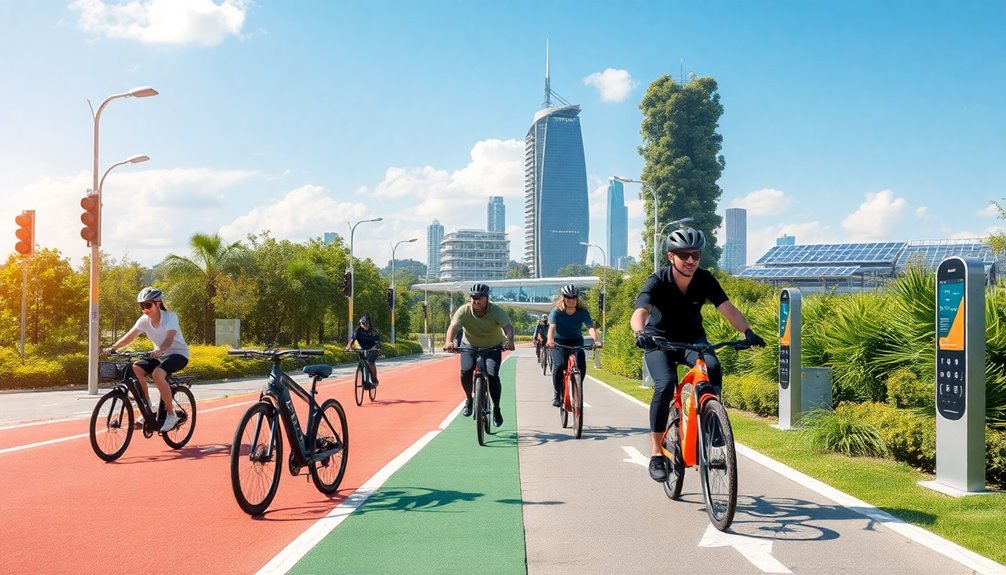
The cycling world isn't just embracing sustainability; it's also experiencing a technological revolution that's changing how you ride.
Smart helmets with communication systems and crash detection enhance your safety on busy roads, while AI-assisted training tools like Zwift and Wahoo's SYSTM optimize your performance.
Predictive maintenance tools help you monitor bike wear, ensuring a reliable ride each time.
Plus, innovations like graphene-infused frames and tires improve aerodynamics and durability, catering to both recreational and commuting cyclists.
As cycling technology advances, it shapes not only individual experiences but also strengthens the cycling community.
With improved cycling infrastructure supporting these developments, you'll find yourself riding safer and smarter, no matter your skill level.
Increasing Diversity and Inclusion
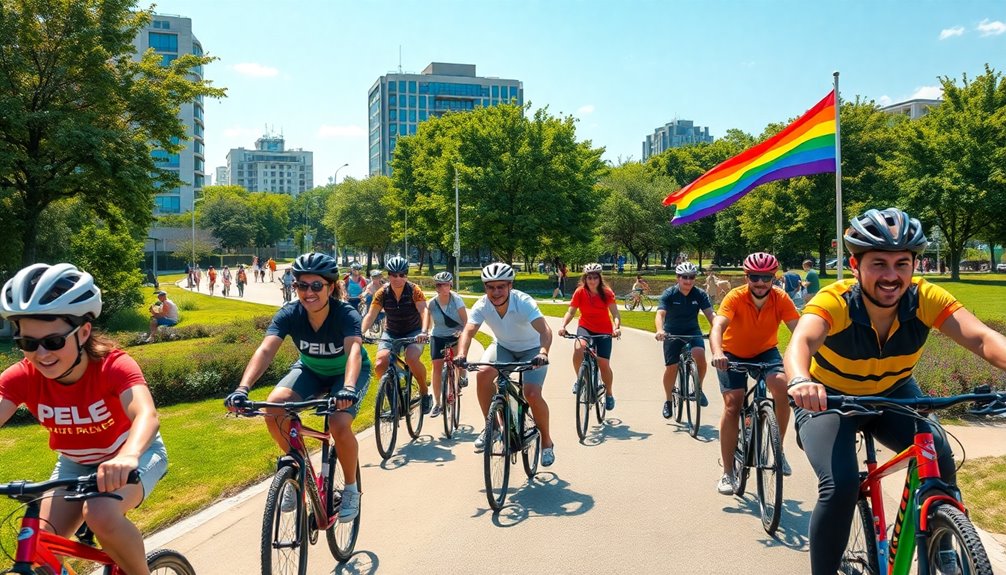
As cycling continues to grow, youth programs and grassroots initiatives are making a real difference in promoting diversity and inclusion.
You're seeing more underrepresented groups getting involved, creating vibrant local communities.
It's exciting to witness how these efforts are reshaping the cycling landscape for everyone.
Youth Cycling Programs
Youth cycling programs are transforming the landscape of the sport by increasing diversity and inclusion. Initiatives by organizations like NICA and UCI foster local communities, creating welcoming environments for all youth.
| Key Factors | Impact on Youth Cycling Programs |
|---|---|
| Diverse Role Models | Inspires participation among underrepresented groups |
| Community Engagement | Builds supportive networks for young cyclists |
| Accessible Events | Attracts a wider range of participants |
| Marketing Strategies | Highlights inclusivity and representation |
| Supportive Infrastructure | Guarantees safe and welcoming cycling spaces |
As these efforts continue, they'll help guarantee that every young person feels valued and encouraged to join the cycling community. The future of youth cycling looks brighter with these positive changes.
Grassroots Community Initiatives
While grassroots community initiatives are essential in reshaping the cycling landscape, they also play an important role in increasing diversity and inclusion.
You'll find organizations like the National Interscholastic Cycling Association (NICA) paving pathways for underrepresented groups, ensuring that youth cycling programs are accessible for everyone.
Local initiatives are thriving in diverse regions, boosting participation and representation in the sport.
The Union Cycliste Internationale (UCI) expands its global reach with events in varied locations, further promoting inclusivity in competitions.
Meanwhile, brands showcase diverse ambassadors, reflecting a more representative cycling culture.
Together, these efforts engage communities and encourage diverse demographics to embrace cycling, making the sport not only inclusive but also vibrant and dynamic.
A Spotlight on Women's Cycling
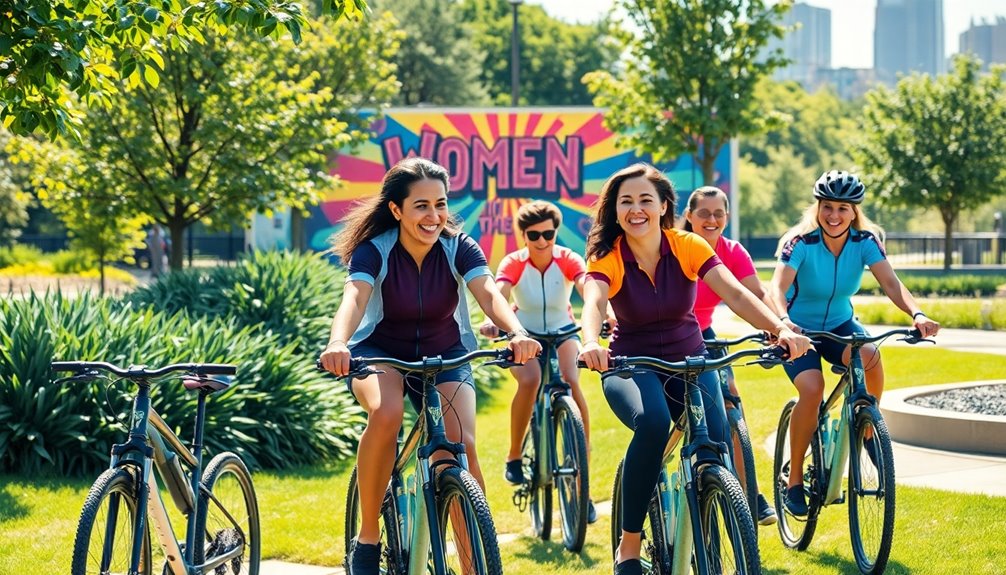
Women's cycling is experiencing a remarkable transformation, driven by increased visibility and support from various sectors.
The introduction of the Tour de France Femmes avec Zwift in 2024 highlighted the growing demand for women's competitions within the cycling market. As prize money disparities narrow, thanks to rising sponsorships for women's teams, you're witnessing a significant shift toward equity in the sport.
New UCI Women's WorldTour races launching in 2025 further elevate opportunities for female cyclists. Grassroots programs are encouraging young girls to embrace cycling, cultivating future role models.
Expanded media coverage not only boosts visibility but also engages audiences, fostering a vibrant community around women's cycling. This momentum promises an inclusive and dynamic future for all cyclists.
The Rise of Gravel and Adventure Cycling
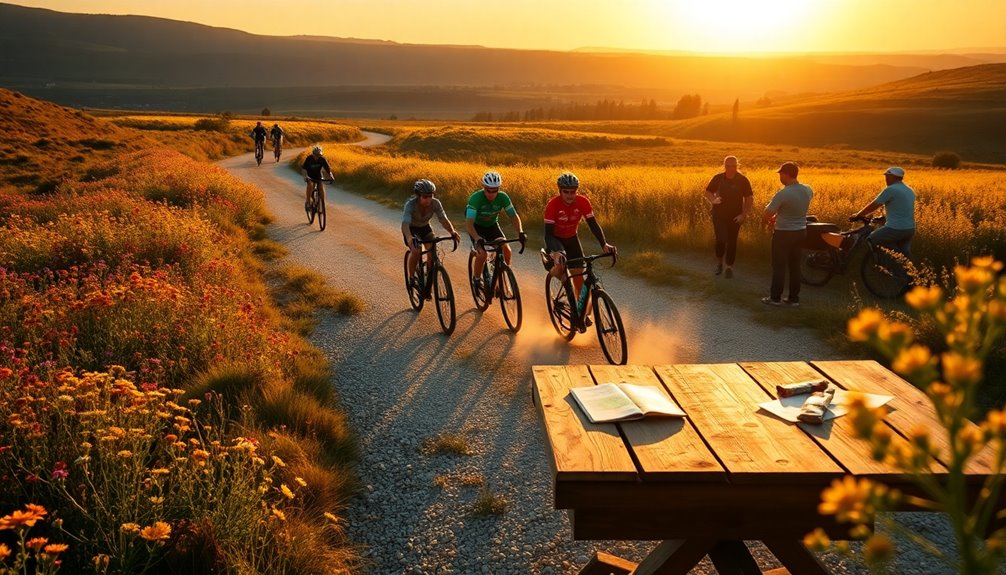
As gravel and adventure cycling surges in popularity, more cyclists are discovering the joy of exploring diverse terrains and landscapes.
Events like Unbound Gravel and the Gravel World Championships are gaining recognition, drawing in participants who value community over competition. The inclusive nature of gravel cycling makes it accessible to cyclists of all skill levels, emphasizing enjoyment.
Specialized gravel bike models, with wider tires and endurance-focused geometry, enhance your experience on varied surfaces.
Plus, guided tours and bikepacking routes are expanding globally, providing even more opportunities for adventure cycling enthusiasts.
Whether you're a novice or seasoned cyclist, the growth of gravel cycling invites you to embrace the thrill of new challenges and unforgettable rides.
Cycling's Role in Urban Mobility
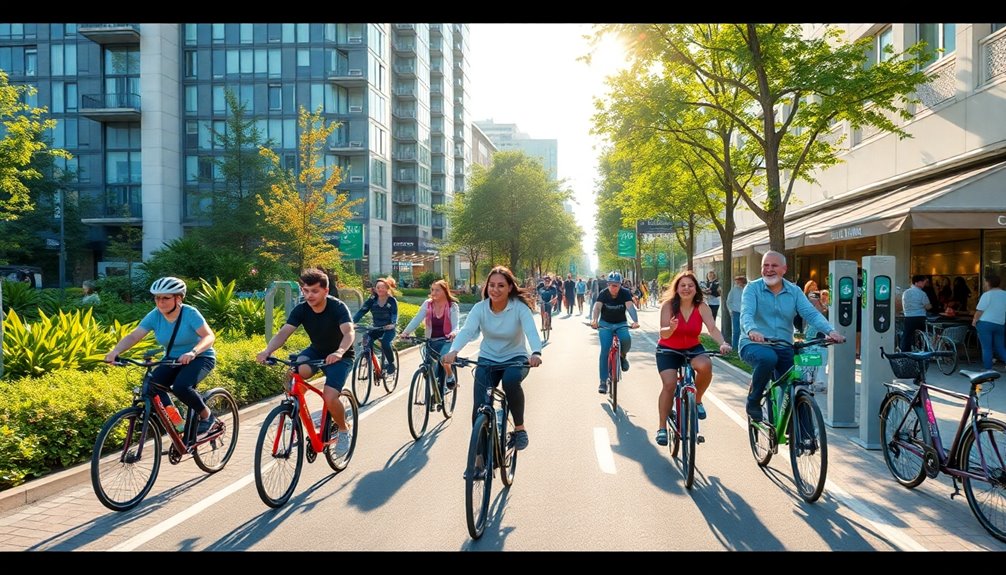
Cycling is becoming an essential part of urban mobility solutions, especially as cities seek to tackle congestion and pollution. More cities are investing in dedicated cycling lanes and safety measures, making cycling a viable mode of transport for daily commutes.
This shift not only helps reduce transport emissions but also promotes active lifestyles, paving the way for a healthier urban environment. You'll find that multimodal transport options, which combine cycling with public transport, are enhancing access to tourist destinations and urban centers.
Inspired by successful cities like Amsterdam and Copenhagen, urban policies are increasingly cycling-friendly, encouraging cycling tourism and creating vibrant communities. Embracing cycling can transform your city into a more sustainable and accessible place to live and explore.
The Impact of Bikepacking Culture

Bikepacking culture isn't just about hitting the trails; it's also about building community.
You'll find that engaging with fellow enthusiasts fosters shared experiences, encouraging stewardship of the routes you explore together.
Plus, the emphasis on sustainable travel practices guarantees that your adventures leave a minimal impact on the environment.
Community Engagement Initiatives
While exploring the growing bikepacking culture, you'll find that it plays a pivotal role in fostering community engagement. With over 200,000 kilometers of shared routes across nearly 50 countries, bikepacking creates opportunities for cycling enthusiasts to connect through their adventures.
In 2024, the addition of 54 new bikepacking route guides—expanding coverage by over 21,000 kilometers—shows the increasing interest in accessible outdoor activities. This culture emphasizes sustainability and inclusivity, making it a family-friendly option for all ages.
Community engagement initiatives advocate for better access to trails and bike lanes, enhancing unity among participants. Ultimately, shared experiences in bikepacking not only enrich individual enjoyment but also strengthen bonds within cycling communities, cultivating a resilient culture around outdoor participation.
Sustainable Travel Practices
As you embrace the bikepacking culture, you'll quickly notice its strong emphasis on sustainability and responsible travel practices. By choosing bikepacking, you're not just exploring new terrains; you're actively combating climate change.
Here are some key aspects of sustainable travel practices in bikepacking:
- Minimizing environmental impact through low-carbon transportation
- Supporting local communities by purchasing from local shops
- Practicing Leave No Trace principles to protect nature
- Engaging in trail maintenance and advocacy for better bike lanes
- Fostering inclusivity by making bikepacking accessible to families
With over 200,000 kilometers of bikepacking routes worldwide, you're part of a movement that promotes eco-friendly travel and strengthens connections among cyclists. Additionally, leveraging solar energy solutions can further enhance your bikepacking experience by providing sustainable power sources for your adventures.
Enjoy your adventure while making a positive impact!
Innovations in Cycling Infrastructure
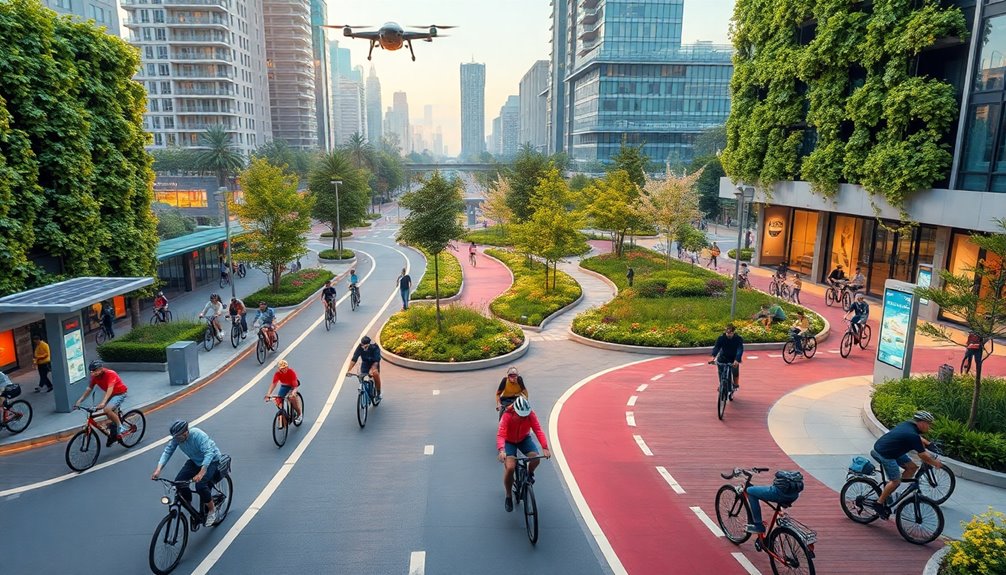
Innovations in cycling infrastructure are transforming urban landscapes, making it easier and safer for you to ride. Cities are increasingly adopting dedicated cycling lanes and improved signage, drawing inspiration from cycling hubs like Amsterdam and Copenhagen.
The European Cycling Federation supports these efforts by providing resources to enhance safety and access for cyclists. You'll also find innovative bike parking solutions, like automated bike storage systems and multimodal hubs that seamlessly integrate cycling with public transport.
Additionally, predictive maintenance tools allow cities to monitor cycling paths proactively, ensuring they remain in top condition. As urban areas tackle congestion and environmental challenges, investments in cycling infrastructure are set to grow, fostering a more bike-friendly culture for everyone.
Community Engagement and Support Systems
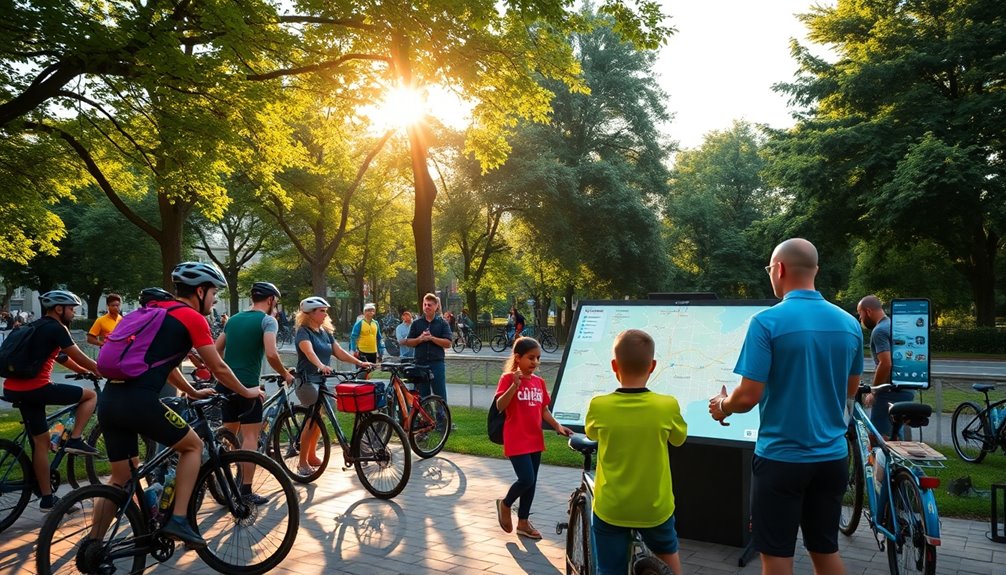
Community engagement plays an essential role in fostering vibrant cycling cultures across urban and rural areas.
Community engagement is vital for cultivating lively cycling cultures in both urban and rural settings.
By actively participating in local initiatives, you can help strengthen support systems that make cycling enjoyable and accessible for everyone.
Here are some ways community engagement can enhance your cycling experience:
- Join platforms like the EuroVelo Facebook group to share travel plans and stories.
- Support grassroots initiatives to build local cycling communities.
- Rely on recommendations and word-of-mouth to discover popular cycling destinations.
- Participate in bikepacking events that promote shared experiences and sustainable practices.
- Collaborate with local businesses to advocate for environmental awareness.
Frequently Asked Questions
What Is the Future of Cycling?
The future of cycling looks bright for you!
You'll see more sustainable practices, with brands using recycled materials and cities improving bike recycling programs.
Expect a rise in gravel and adventure cycling, making it easier for everyone to join in.
Technological advances will enhance your riding experience, from AI training tools to smart maintenance systems.
Plus, youth programs will promote inclusivity, so more people can enjoy the joy of cycling together.
What Is the Trend in the Cycling Industry?
Cycling's current trend showcases a surge in cyclists, with more folks hitting the pavement.
eBike enthusiasm's skyrocketed, doubling ownership and driving demand.
Younger consumers are ditching traditional ownership for subscription services and rentals, embracing convenience.
Sustainability's also stealing the spotlight, as many prefer second-hand bikes and eco-friendly products.
Inclusivity is a key focus, with grassroots groups working hard to broaden the cycling community, ensuring everyone feels welcome and valued on their rides.
What Is the 75 Rule in Cycling?
The 75 Rule in cycling suggests you should aim to maintain your training intensity at 75% of your maximum heart rate.
This intensity optimizes endurance and performance, encouraging fat oxidation and improving your aerobic capacity.
It's especially beneficial for recreational cyclists or those looking to boost stamina without overtraining.
What Is the Global Impact on Society of the Bicycle?
The bicycle has a profound global impact on society.
You see, it promotes sustainable transport, reduces carbon emissions, and enhances public health. As you ride, you help local economies thrive through cycling tourism, which supports community livelihoods.
Bicycles also improve accessibility, allowing you to explore urban areas more easily. Plus, they foster social connections, encouraging a sense of community among cyclists.
Ultimately, your choice to cycle contributes positively to a healthier, more sustainable world.
Conclusion
As you pedal into the future, you'll witness cycling communities transforming in ways you never imagined. With sustainability, inclusivity, and innovation steering the way, it's like watching a beautiful tapestry being woven—each thread representing a unique voice and experience. Embrace these changes, and together, let's create a vibrant cycling culture that welcomes everyone. After all, whether you ride solo or in a pack, the road ahead is brighter when we support one another.
